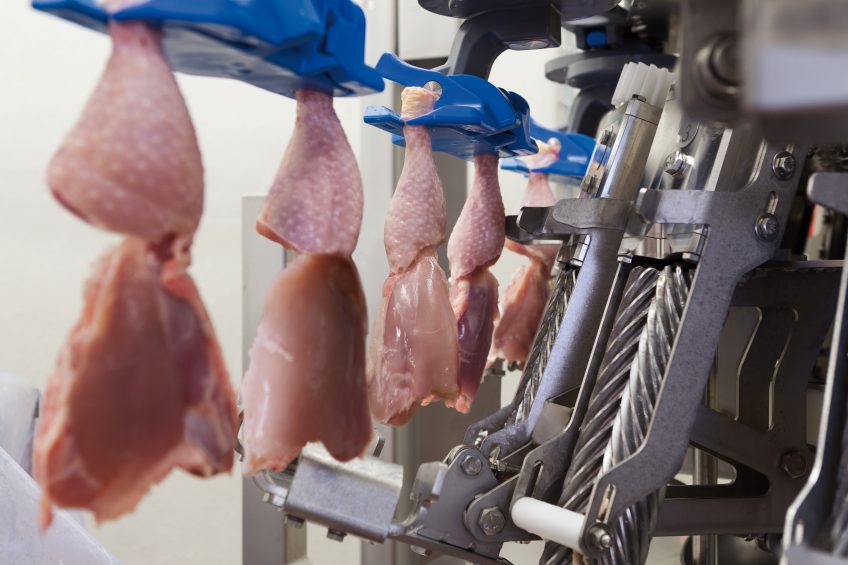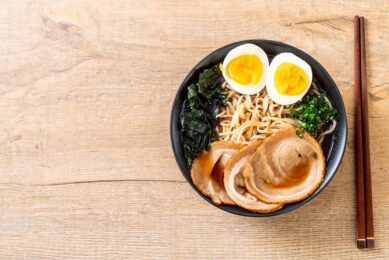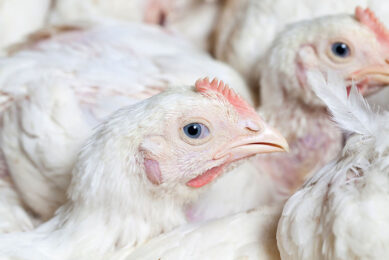Focus on thigh meat value

Up to 36% of the broilers carcass weight out of Western European poultry processing facilities is leg meat. For the most part this ends up in a frozen state on the world market. By that leg meat is greatly undervalued. Focusing on valorisation of thigh meat can be highly profitable.
Everywhere around the world the process of poultry slaughter and processing is more or less standardised. That said, the way the end product is valued, differs a lot. Whereas in European countries the main focus is on breast fillets, Asian countries tend to value leg cuts the most. Here it is the breast that end up in the bargain buckets. European processors have a history of putting the legs in the deep freeze and discard them on the low value world market. In recent times however, there has been a shift that can be noticed on the supermarket shelves.
Consumers are beginning to appreciate the tastiness of leg meat and processors are trying to cater to that demand. In part they are making the leg products available due to the quest for added value. This trend is particularly enhanced by the need to look for better valorisation of meat of the slower growing breeds, because it is hardly impossible to calculate all the extra cost and extra feed intake of this breeds to the breast meat alone. Part of the answer is to offer fresh deboned thigh meat fillets, but that comes at a cost. Nearly all thigh fillets on the market now are deboned and cut either by stand-alone machines or by hand, a costly process and a headache for many process managers who have to ensure that there are enough hands at the cut up line.
Higher valorisation of thigh meat
Those who crunch the numbers see that the focus on higher valorisation of thigh meat is a sure bet. When breast fillet at supermarket prices is indexed at 100, whole thigh meat with bone is valued at a mere 30. However, thigh fillet is valued at the index of 80. And there is a lot of potential in volume as well. The breast fillet only makes up 23% of the broiler, opposed to 31% of organs and bones and 36% of leg, both thigh and drumstick. ‘’Better valuing cuts is the future,” notes Rabobank expert Nan Dirk Mulder. He spoke at a Marel Poultry ShowHow symposium in Copenhagen recently. ‘’On a world wide scale Rabobank is bullish on the poultry market with annual growth predictions up to 4%. In Europe this growth in volume will only be around 1% per year. Exception will be the market for slower growing birds. This has a market share now of about 8% and it will double in the next 5 to 6 years. There is a lot of potential in making the most of the cuts of these birds specifically.”
‘’The market is ready for leg cuts,” says market intelligent specialist Ronald Kranenbarg. He sees that in mature markets like EU and USA, breast meat has reigned supreme in both home cooking and processed products, but the shift is there. Leg meat, ground up, is still used mainly for nuggets and sausage products, but both restaurant chefs and consumers are moving towards the thigh meat. Science learns that there isn’t much difference between breast and thigh meat from a nutritional perspective. Just the fat content tends to be slightly higher in the thigh meat, an advantage during preparation. Leg meat is more succulent and dries out less during cooking and has more flavour than breast. This good flavour characteristic is to most people the most important of all meat characteristics. “Chicken legs and thighs are poultry’s unsung heroes.”

A huge opportunity
Meeting the trend and taking advantage of high value leg products is something the attendees of the Marel Poultry ShowHow tried to get their heads around. Investing in labour intensive manual cut up lines is surely not the preferred way forward. That said, legs offer so much potential that it is illogical to condemn them to a second-rate status as deep-frozen exports to the world market. Marel Poultry realised that as well and introduced an add on, in line solution for deboning and filleting thighs. They launched an new system at Eurotier 2016 which is now fully operational. In a four step, fully automated procedure, legs are cut at the knee joint, the thighs are skinned, deboned and in a fourth step the thigh fillet and the knee cap are harvested.
The drumsticks are kept in line and packed separately at the end of the line. Marel specialist Morton Dalqvist states: ‘’The harvested thigh meat is suitable as raw material for creating strips, bites, cubes for skewers or whole muscle meat burgers. Great for the barbecue season, but we can go beyond that in further processing for the fast food chains for year round consumption.” He sees that in Asia already 85% of steaks and chicken burgers is made from thigh meat. ‘’A huge opportunity for markets in the EU and USA.”












